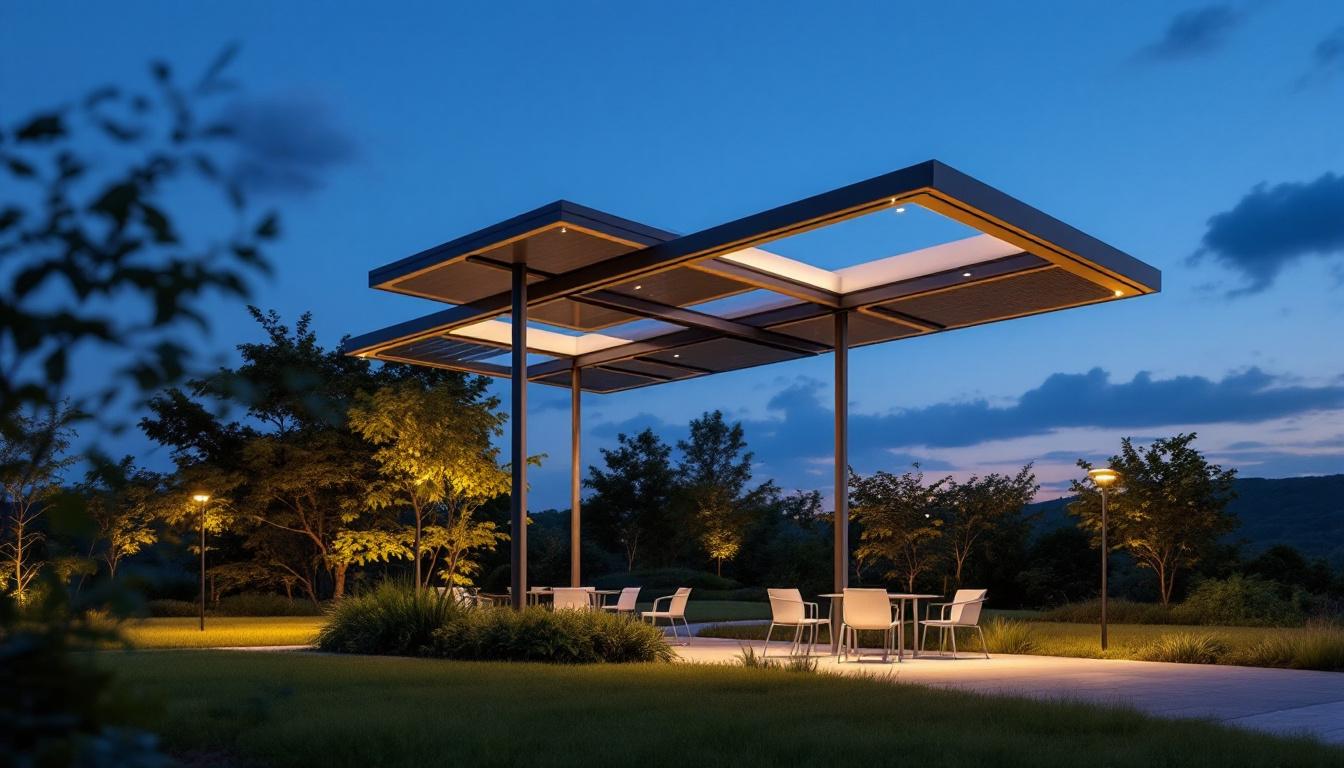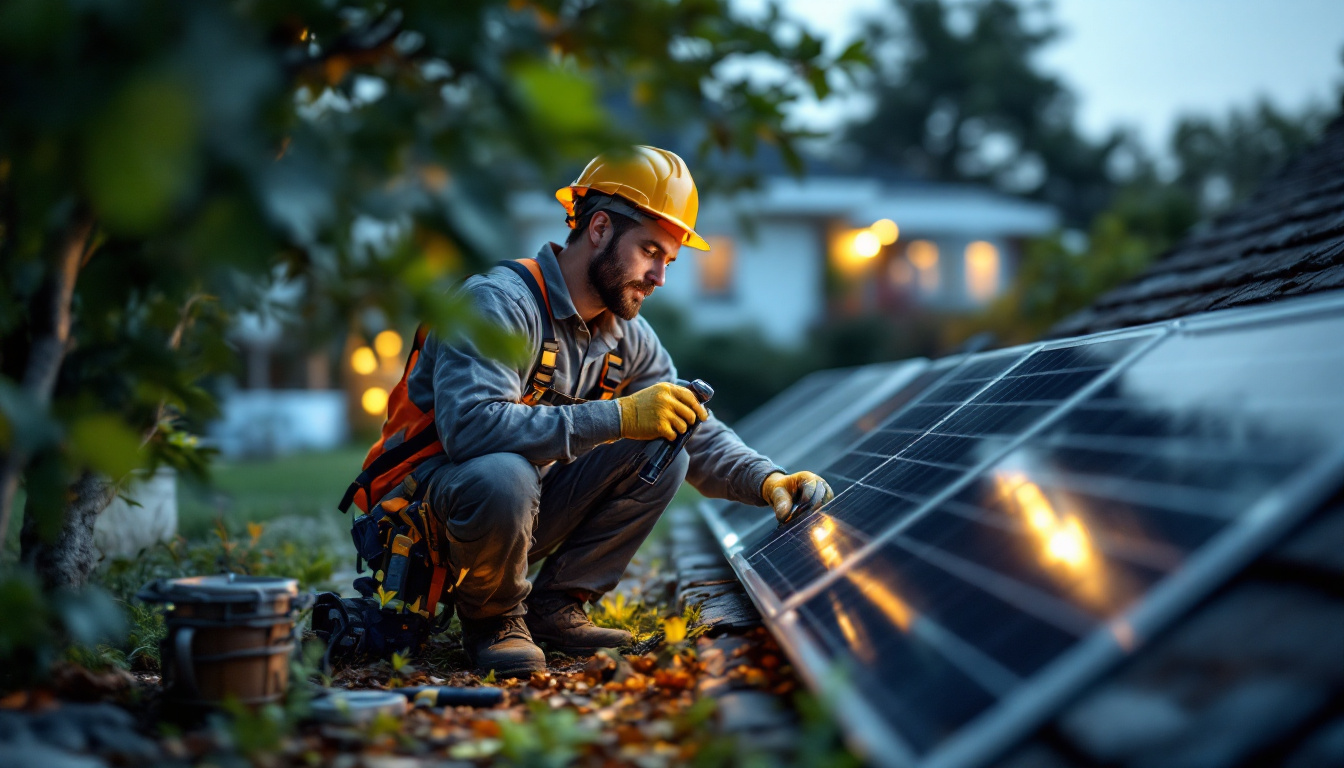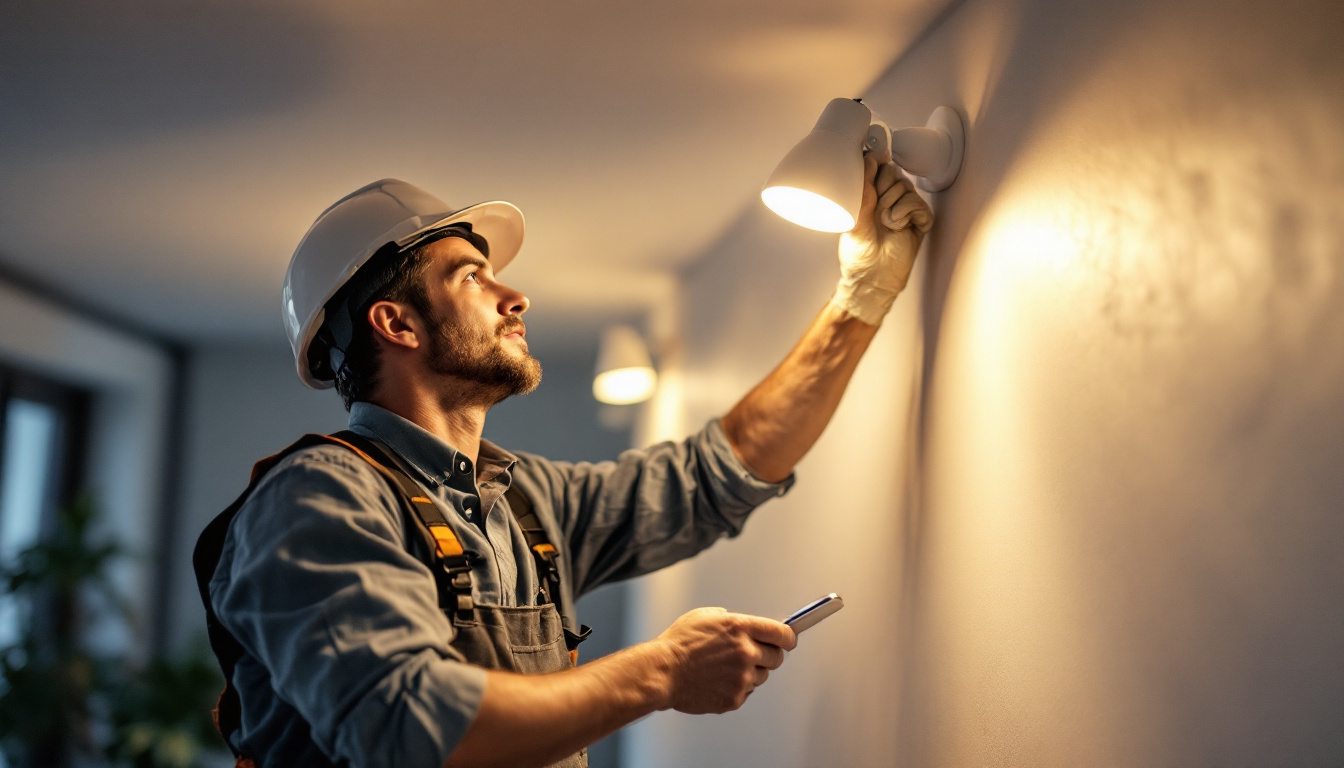
In an era where energy efficiency and sustainability are paramount, the solar light canopy has emerged as a game-changing solution for outdoor lighting. This innovative technology not only reduces energy costs but also enhances the aesthetic appeal of various spaces. For lighting contractors, understanding the intricacies of solar light canopies is essential for providing clients with modern, eco-friendly options that meet their needs and expectations.
Solar light canopies are structures designed to harness solar energy for lighting applications. Typically installed in outdoor settings such as parking lots, parks, and commercial properties, these canopies feature integrated solar panels that capture sunlight and convert it into electricity. This electricity powers LED lights, providing illumination without relying on the grid. The growing popularity of solar light canopies is driven by the increasing demand for sustainable energy solutions and the need for cost-effective lighting alternatives that minimize environmental impact.
At the core of every solar light canopy are several key components that work in unison to deliver energy-efficient lighting. These include:
Each of these components plays a crucial role in the overall functionality and efficiency of the solar light canopy, making it vital for contractors to understand how they work together. Additionally, the integration of advanced technologies, such as motion sensors and timers, can further enhance the efficiency of these systems by ensuring that lights are only activated when needed, thus conserving energy and extending battery life.
Solar light canopies come in various designs and configurations to suit different applications. Some common types include:
Understanding the different types of solar light canopies allows contractors to recommend the best solutions tailored to their clients’ specific requirements. Furthermore, the aesthetic appeal of solar canopies can also be a significant factor in their selection. Many manufacturers offer customizable designs, allowing clients to choose colors, shapes, and materials that align with their branding or architectural style. This not only enhances the visual appeal of the space but also promotes a commitment to sustainability, which can be a strong selling point for businesses looking to attract environmentally conscious customers.
The advantages of solar light canopies extend beyond mere energy savings. They offer a multitude of benefits that can enhance any outdoor space.
One of the most significant benefits of solar light canopies is their energy efficiency. By utilizing solar power, these systems drastically reduce reliance on traditional electricity sources. This not only lowers energy bills but also provides a return on investment over time.
Moreover, many regions offer incentives and rebates for solar installations, further reducing upfront costs. For contractors, this presents an excellent opportunity to market solar light canopies as a financially savvy choice for clients.
Solar light canopies contribute to a more sustainable future by reducing carbon footprints. By harnessing renewable energy, they help decrease greenhouse gas emissions associated with conventional lighting solutions. This aligns with the growing demand for environmentally responsible practices in various industries.
Contractors can emphasize the eco-friendly aspect of solar canopies to clients who prioritize sustainability in their projects. This not only enhances the appeal of the installation but also positions the contractor as a leader in green technology.
Beyond functionality, solar light canopies can enhance the visual appeal of outdoor spaces. With various designs and finishes available, they can complement the architecture of a property while providing essential lighting. Whether it’s a sleek modern look or a more traditional style, there’s a solar light canopy to suit any aesthetic.
Additionally, their versatility allows for installation in diverse environments, from urban settings to rural landscapes. This adaptability makes them an attractive option for contractors looking to meet a wide range of client needs.
Installing solar light canopies requires careful planning and execution. Contractors must consider several factors to ensure a successful installation.
A thorough site assessment is crucial before installation. Factors such as sunlight exposure, shading from nearby structures, and the overall layout of the area must be evaluated. This assessment helps determine the optimal placement of the canopy and the number of solar panels required for adequate lighting.
Contractors should also consider local regulations and zoning laws that may impact the installation process. Understanding these requirements beforehand can prevent delays and ensure compliance.
Once the site assessment is complete, the next step involves designing the solar light canopy system. This includes selecting the appropriate solar panels, LED fixtures, and battery storage options based on the specific lighting needs of the area.
Contractors should also consider the integration of smart control systems that can enhance energy efficiency. These systems can adjust lighting levels based on the time of day or occupancy, further optimizing energy use.
While solar light canopies are generally low-maintenance, regular inspections are essential to ensure optimal performance. Contractors should educate clients on the importance of keeping solar panels clean and free from debris, as this can significantly impact energy generation.
Additionally, offering ongoing support and maintenance services can enhance client satisfaction and foster long-term relationships. Providing clients with peace of mind regarding their investment is crucial for repeat business and referrals.
Despite the many advantages of solar light canopies, there are challenges that contractors may encounter during the installation and maintenance phases.
The initial investment for solar light canopies can be higher than traditional lighting systems. However, contractors can mitigate this concern by presenting a comprehensive cost-benefit analysis to clients. Highlighting potential savings on energy bills and available incentives can help justify the upfront costs.
Additionally, offering financing options or partnerships with solar financing companies can make the investment more accessible for clients.
Weather conditions can impact the efficiency of solar panels. For instance, prolonged periods of rain or cloud cover can reduce energy generation. Contractors should educate clients on the importance of battery storage, which can provide a backup power source during less favorable weather conditions.
Furthermore, selecting high-quality solar panels designed to withstand various environmental conditions can enhance system reliability and longevity.
The solar energy sector is continually evolving, with new technologies emerging regularly. Staying informed about the latest advancements is crucial for contractors to provide clients with the most effective solutions. Participating in industry workshops, training sessions, and trade shows can help contractors remain up-to-date on innovations in solar technology.
By embracing new technologies, contractors can enhance their offerings and maintain a competitive edge in the market.
The future of solar light canopies looks promising, with several trends emerging that could shape the industry.
As smart technology continues to gain traction, the integration of IoT (Internet of Things) devices into solar light canopies is becoming more common. These systems can provide real-time data on energy usage, maintenance needs, and environmental conditions, allowing for proactive management and optimization.
Contractors who embrace smart technology can offer clients enhanced control and monitoring capabilities, making solar light canopies even more appealing.
As demand for aesthetically pleasing designs grows, manufacturers are likely to focus on creating more customizable solar light canopies. This could include a wider range of materials, colors, and shapes, allowing contractors to cater to clients’ specific design preferences.
Providing customizable options can set contractors apart in a competitive market and attract clients looking for unique solutions.
The versatility of solar light canopies means they can be applied in various settings beyond traditional outdoor spaces. Future trends may see their use in urban environments, residential areas, and even temporary installations for events or festivals.
Contractors should keep an eye on emerging applications and be prepared to adapt their offerings to meet evolving market demands.
Solar light canopies represent a significant advancement in energy-efficient lighting solutions. Their ability to harness renewable energy, reduce costs, and enhance outdoor aesthetics makes them an attractive option for contractors and clients alike. By understanding the components, benefits, installation considerations, and future trends associated with solar light canopies, lighting contractors can position themselves as knowledgeable leaders in this growing field.
As the demand for sustainable solutions continues to rise, embracing solar light canopies will not only benefit contractors’ businesses but also contribute to a greener, more energy-efficient future. By staying informed and adapting to industry trends, contractors can ensure they remain at the forefront of this exciting evolution in outdoor lighting.
Ready to elevate your lighting solutions with the efficiency and sustainability of solar light canopies? LumenWholesale is here to support your vision. Our spec-grade lighting products set the standard for quality and performance, ensuring your projects shine with reliability. Say goodbye to inflated markups and hello to unbeatable wholesale prices, free shipping, and the convenience of bulk buying. Don’t compromise on quality or value – choose LumenWholesale for your lighting needs and make every project a beacon of excellence. Discover our extensive selection and take advantage of the best value in lighting today by visiting Wholesale Lighting at the Best Value.

Discover essential best practices for lighting contractors looking to harness the power of solar lights with solar panels.

Discover essential insights for lighting contractors on choosing and installing LED outside shop lights.

Discover the transformative power of light panels in modern design with our comprehensive guide tailored for lighting contractors.

Discover the essential insights lighting contractors need about LED light fixtures, from energy efficiency to design versatility, and learn how these innovations can transform any project..